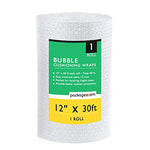You have no items in your shopping cart.
When it comes to convenient and versatile packaging solutions, bags made of plastic have become an integral part of our daily lives. From grocery shopping to storage, plastic bags have found their way into various aspects of modern living. In this comprehensive guide, we will delve into the world of bags plastic, exploring their uses, environmental impact, regulations, and more. Whether you're curious about the different types of plastic bags or concerned about their ecological footprint, this article has got you covered. So, let's dive in and explore the fascinating realm of bags plastic!
What Are Bags Plastic?
An introduction to the versatile and ubiquitous plastic bags
Plastic bags are lightweight and flexible containers made from various types of polymers. They are widely used for packaging, carrying, and storing items in both commercial and household settings. These bags are typically produced using polyethylene, a petroleum-derived polymer, and are available in various shapes, sizes, and designs to suit different purposes. From grocery bags and garbage bags to resealable ziplock bags, the applications of bags plastic are vast and diverse.
The History of Bags Plastic
A glimpse into the past: the origin and evolution of plastic bags
Plastic bags, as we know them today, have a relatively short but significant history. Let's take a quick trip back in time to understand their evolution:
Early Beginnings: The Birth of Plastic
In the mid-19th century, the development of synthetic polymers marked a turning point in material science. In 1907, Leo Baekeland invented Bakelite, the first fully synthetic plastic. This breakthrough paved the way for further advancements in polymer technology.
Emergence of Plastic Bags
The first modern plastic bags were introduced in the 1950s. Swedish engineer Sten Gustaf Thulin, working at the packaging company Celloplast, invented a method for creating a strong, thin, and lightweight bag using a flat-folding technique. This innovation laid the foundation for the widespread use of plastic bags in the years to come.
Popularity and Controversy
By the 1960s, plastic bags had gained significant popularity due to their affordability and versatility. However, concerns regarding their environmental impact began to surface as their usage escalated. Over the years, the debate surrounding the sustainability of bags plastic has intensified, leading to increased regulations and alternative solutions.
Types of Bags Plastic
Exploring the diverse range of plastic bags available
Plastic bags come in various types, each designed to cater to specific needs. Let's explore some common varieties:
1. Grocery Bags
Grocery bags, also known as shopping bags, are commonly used for carrying items purchased from stores. These bags are typically made from high-density polyethylene (HDPE), a durable and lightweight material.
2. Garbage Bags
Garbage bags, as the name suggests, are used for collecting and disposing of household or commercial waste. They are often made from low-density polyethylene (LDPE), which offers better flexibility and resistance to tearing.
3. Ziplock Bags
Ziplock bags are popular for their resealable design, allowing convenient storage and preservation of various items. These bags are commonly used to store food, organize small items, or keep belongings safe during travel. Ziplock bags are typically made from LDPE or polypropylene (PP).
4. Produce Bags
Produce bags are transparent and lightweight bags used to package fruits, vegetables, and other perishable items. They are usually made from HDPE and are intended for single-use to ensure hygiene.
5. T-shirt Bags
T-shirt bags, also known as carryout bags or checkout bags, are commonly used in retail stores. Their name derives from their shape, resembling a T-shirt when unfolded. These bags are typically made from HDPE or LDPE.
6. Biodegradable Bags
Biodegradable bags are designed to break down naturally over time, reducing their environmental impact. They are often made from a blend of petroleum-based polymers and additives that enhance biodegradability.
7. Compostable Bags
Compostable bags are similar to biodegradable bags but undergo a specific composting process, breaking down into nutrient-rich materials. These bags are commonly used for organic waste collection and are made from plant-based materials such as cornstarch or polylactic acid (PLA).
8. Medical Waste Bags
Medical waste bags are specially designed to safely dispose of infectious or hazardous waste generated in healthcare settings. These bags adhere to strict regulations and are made from puncture-resistant materials to prevent contamination.
Environmental Impact of Bags Plastic
Understanding the ecological footprint of bags plastic and the pursuit of sustainability
The environmental impact of bags plastic has become a topic of concern and discussion worldwide. While these bags offer convenience, their widespread use has raised questions about their contribution to pollution, waste management, and conservation of resources. Let's examine some key aspects related to the environmental impact of bags plastic:
Carbon Footprint
The production of bags plastic involves the extraction and refining of fossil fuels, primarily petroleum. This process releases greenhouse gases into the atmosphere, contributing to climate change. Additionally, the transportation and disposal of plastic bags further contribute to their carbon footprint.
Waste Management Challenges
One of the primary concerns associated with bags plastic is their persistence in the environment. Improper disposal and littering can lead to plastic bags ending up in rivers, oceans, and landfills. Their durability and resistance to decomposition mean that plastic bags can persist in the environment for hundreds of years, posing risks to wildlife and ecosystems.
Marine Pollution
Plastic bags that find their way into water bodies can have severe consequences for marine life. Marine animals often mistake plastic bags for food or become entangled in them, leading to injuries and even death. The accumulation of plastic debris in oceans and waterways poses a significant threat to biodiversity and ecological balance.
Recycling and Circular Economy
Efforts to mitigate the environmental impact of bags plastic involve recycling and the promotion of a circular economy. Recycling plastic bags helps reduce the demand for new materials and decreases the amount of waste sent to landfills. Many countries have implemented recycling programs, encouraging consumers to dispose of plastic bags correctly.
Alternatives and Sustainable Solutions
To address the environmental concerns surrounding bags plastic, various alternatives and sustainable solutions have emerged. These include:
- Reusable Bags: Encouraging the use of durable and reusable bags, such as cotton totes or jute bags, helps reduce the consumption of single-use plastic bags.
- Paper Bags: Paper bags are a renewable and recyclable alternative to plastic. However, their production requires more energy and resources, making their environmental impact more complex.
- Bio-based Plastics: Some manufacturers produce bags plastic from bio-based polymers derived from renewable sources like corn or sugarcane. These bags have a reduced carbon footprint compared to traditional plastic bags.
- Education and Awareness: Increasing awareness about the environmental consequences of bags plastic and promoting responsible consumption habits play a crucial role in finding sustainable solutions.
Regulations and Bans on Bags Plastic
Navigating the regulatory landscape surrounding bags plastic
Governments and organizations worldwide have implemented regulations and bans to address the environmental concerns associated with bags plastic. These measures aim to reduce consumption, encourage recycling, and promote the use of alternative packaging materials. Let's explore some notable examples:
1. Single-Use Plastic Bag Bans
Several countries, states, and cities have implemented bans or restrictions on single-use plastic bags. These regulations often aim to discourage their distribution by retailers and promote the use of reusable bags. Notable examples include:
- Kenya: In 2017, Kenya implemented one of the strictest bans on plastic bags, imposing heavy fines and even potential jail time for those found manufacturing, selling, or using plastic bags.
- European Union: The EU implemented a directive in 2019 that requires member states to reduce the consumption of lightweight plastic bags and sets specific targets for reduction.
- California, USA: California was one of the first states in the US to ban single-use plastic bags. The ban encourages the use of reusable bags and allows retailers to charge customers for recycled paper bags or reusable bags.
2. Taxation and Levies
Some countries and regions have implemented taxes or levies on bags plastic to discourage their usage. These financial incentives aim to shift consumer behavior towards more sustainable alternatives. For example:
- Ireland: In 2002, Ireland introduced a plastic bag tax, known as the PlasTax, which significantly reduced the consumption of plastic bags. The revenue generated from the tax has been used to fund environmental initiatives.
- Denmark: Denmark implemented a similar tax on plastic bags in 1994, resulting in a significant reduction in their consumption. The tax has since been expanded to include other types of packaging materials.
3. Extended Producer Responsibility (EPR)
Extended Producer Responsibility is a regulatory approach that holds manufacturers responsible for the entire life cycle of their products, including their disposal. Some countries have implemented EPR programs specific to bags plastic, encouraging manufacturers to take responsibility for their products' environmental impact.
4. Voluntary Initiatives
In addition to regulations, many organizations and businesses have taken voluntary initiatives to address the issue of bags plastic. These include commitments to reduce plastic packaging, use recycled materials, and promote recycling. Collaborative efforts between governments, businesses, and consumers are crucial in achieving significant and lasting change.
FAQs about Bags Plastic
Answers to commonly asked questions about bags plastic
Q1: Are plastic bags recyclable?
A1: Yes, plastic bags are recyclable. Many recycling programs accept plastic bags for recycling. However, it's important to note that not all recycling facilities can process them, so it's essential to check with your local recycling guidelines.
Q2: Are biodegradable bags better for the environment?
A2: Biodegradable bags have the potential to break down naturally over time. However, their environmental benefits depend on various factors, such as the specific materials used and the conditions in which they degrade. It's important to ensure proper disposal to maximize their positive impact.
Q3: Can I reuse plastic bags?
A3: Yes, plastic bags can be reused multiple times. However, their durability may vary, so it's important to inspect them for any damages or wear and tear. Reusing bags helps extend their lifespan and reduces the need for single-use bags.
Q4: What are the alternatives to plastic bags?
A4: There are several alternatives to plastic bags, including reusable cloth bags, paper bags, and biodegradable or compostable bags. Choosing alternatives that align with your needs and considering their environmental impact can help make more sustainable choices.
Q5: Do plastic bags contribute to ocean pollution?
A5: Yes, plastic bags can contribute to ocean pollution if not properly disposed of or managed. Littered bags can end up in water bodies, where they pose risks to marine life and ecosystems. Proper waste management and recycling are crucial to mitigate this issue.
Q6: Are all plastic bags harmful to the environment?
A6: While plastic bags have environmental impacts, not all bags are equally harmful. Factors such as material type, disposal practices, and recycling options influence their overall ecological footprint. It's important to consider the entire life cycle of bags plastic when assessing their environmental impact.
Conclusion
Bags plastic have become an integral part of our modern lifestyle, offering convenience and versatility in various applications. However, their environmental impact has raised concerns and led to regulations, bans, and the pursuit of sustainable alternatives. By understanding the diverse types of plastic bags, their environmental implications, and the available solutions, we can make informed choices to minimize their negative effects. Together, through responsible consumption and waste management, we can contribute to a more sustainable future.








